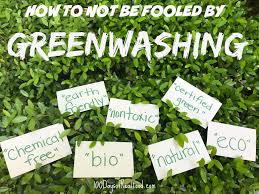By Catherine Dawes
During quarantine, people tried new things, made DIY crafts, learned a skill, or tried to be more active. For me, I wanted to practice being more sustainable. At the time I made this goal, I knew I was going to be living in the greenbelt sustainability cabins when I returned to Furman, and I wanted to change a few lifestyle habits in preparation. I decided to purchase and use items that were more sustainable for the environment, so I purchased products from companies that had a reputation for being environmentally friendly. However, I soon realized these products were not sustainable as they were from companies that greenwash. Corporate greenwashing is the process of promoting sustainable products or practices while hiding non-sustainable practices from the public. Corporations use greenwashing to appear as an environmentally friendly business to the public to attract larger audiences; not only is this deceitful and causes consumers to be skeptical, but sometimes the products they promote cause more harm to the environment than products that do not claim to be sustainable.

A prime example of corporate greenwashing stems from Burt’s Bees which was acquired by the Clorox Company. Burt’s Bees sells products that are made from natural ingredients, but that does not always suggest the products are sustainable as accessing these natural ingredients can cause harm to the environment. Their mantra is to be environmentally friendly; however, they hide the fact that they are owned by the Clorox company- an organization known for not being sustainable as they use harsh chemicals. The only spot on their website that alludes to being owned by the Clorox company is at the bottom of their webpage in small print where the information is less likely to be seen. Through this partnership, Burt’s Bees and Clorox are ultimately one greenwashing corporation with Burt’s Bees’ sustainable front ultimately representing the unsustainable Clorox corporation.
While this currently is corporate greenwashing, Clorox announced a plan to become more sustainable as a company. In 2019, the company announced their intentions to reduce greenhouse emissions by 20% in the coming future. This is part of their IGNITE strategy announced in 2018. Other sustainable goals in the IGNITE strategy include reducing plastic and other waste production, focusing on climate change, and overall being environmentally friendly. Although the project started off on the right track in 2019, it is relatively new and only time will tell if Clorox will abide by the goals outlined in IGNITE.

Overall, the best way to distinguish between which companies greenwash is to do research into company practices. Even if the research consists of “which companies practice greenwashing”, it is a good start to help educate the public about this issue. For a quick search to see how sustainable a personal care product is, use the website listed below:
Citations
Gunther, Marc. “The Real Story Behind Some of the 10 ‘Greenest’ Brands.” Greenbiz, 10 June 2016, https://www.greenbiz.com/article/real-story-behind-some-10-greenest-brands.
Tsui, Jenna. “The Negative Effects of Corporate Greenwashing.” Sea Going Green, 26 Feb. 2020, https://www.seagoinggreen.org/blog/the-negative-effects-of-corporate-greenwashing.
Burt’s Bees. Clorox Company, 2020, Durham NC. https://www.burtsbees.com/values/.
Legg, Teresa. “4 Ways greenwashing will damage your brand.” The Carbon Report, 22 Oct. 2019, https://www.thecarbonreport.co.za/4-ways-greenwashing-will-damage-your-brand/.
Taylor, Amy. “Greenwashing: Don’t be Fooled.” 100 Days of Real Food, 24 Mar. 2020, https://www.100daysofrealfood.com/greenwashing-dont-be-fooled/.
“Sustainability in Our Facilities.” The Clorox Company, 2020, https://www.thecloroxcompany.com/corporate-responsibility/environmental-sustainability/operations/ghg-emissions/. Accessed 9 Oct. 2020.